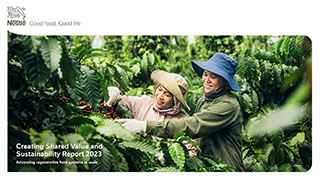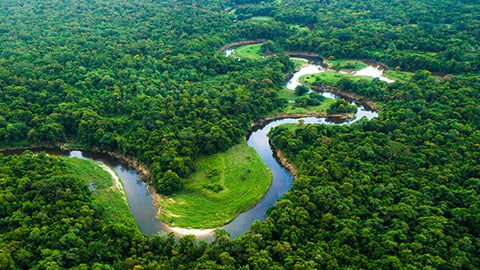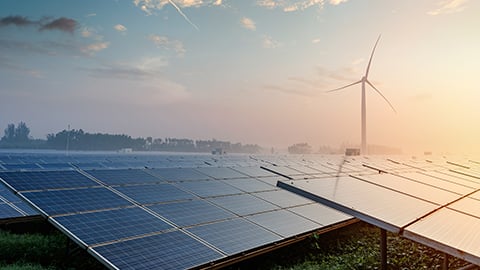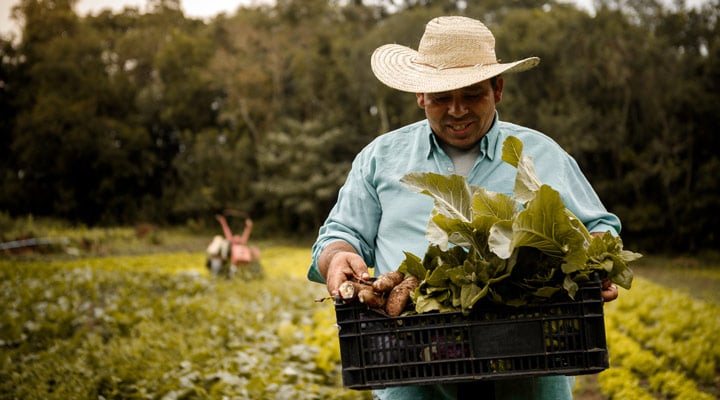Nestlé is working to reduce food waste

Around one-third of food produced globally is either lost or wasted. We are working to reduce food waste where we can.
Given the global resources that are devoted to food production and distribution – in land, water, fertilizer and fuel costs, as well as in greenhouse gases produced – this ineffciency has profound implications for the environment and the ability of the food sector to operate sustainably.
Taking innovative but practical steps to reduce food waste
Food loss and waste can occur at any point between production and consumption. To help prevent this, we have implemented a number of practical, technological and educational initiatives designed to help reduce food loss and waste by 50% by 2030.
We are working alongside farmers, agricultural scientists, researchers and non-profit organizations internationally to reduce food loss and waste. And we are helping people understand how they can prevent food waste at home.
Extending shelf-life and innovative upcycling
Nestlé is helping farmers in Kenya access food preservation systems that allow them to turn surplus fruit and vegetables that would otherwise spoil into less perishable products. By partnering farmers with food processing firms in this way, we are helping improve their livelihoods by creating additional income streams throughout the year.
In West Africa, our R&D experts have trialed a sorghum-based porridge that upcycles what had been an unused by-product from the production of malt for our Milo powdered beverage. The sorghum is blended with other cereals and fortified with micronutrients to create a nutritious breakfast option under the Golden Morn brand. By innovating in this way, we are helping maximize the value we extract from our raw materials and enhancing nutrition for lower-income families.
Revolutionizing crop yields
Nestlé’s agricultural scientists recommended the introduction of drying technologies to help maize farmers in Nigeria reduce waste.
Maize farming is plagued by pests and crop molds, so the use of dome-shaped solar dryers, which can be easily and cost-effectively built using local materials, helps avoid loss. Drying maize also minimizes the presence of harmful toxins, which can dramatically impact health if consumed in large quantities.
Clearer labelling: Less wastage
Nestlé France has collaborated with Too Good to Go’s Consumption Dates Pact to help remove consumer confusion around consumption dates and prevent food from being needlessly discarded.
Poor understanding of sell-by, use-by or best-by dates is thought to be responsible for 10% of all food waste in Europe.

Creating energy from waste
In Indonesia, a Nestlé factory has switched from fossil fuels to locally supplied rice husk as biofuel, with a second factory expected to adopt the same practice. In Finland, we have built a biogas-powered plant.
At our Nestlé Waters facility in Henniez, Switzerland, we are pioneering innovative lower-carbon technologies to produce renewable electricity for local residents and hot water for the facility. This electricity, some of which is sourced through a third-party biogas plant using manure from cattle, together with other organic waste (such as coffee grounds from Nespresso), represents 37% of the thermal energy consumption of the site.
Inspiring people to reduce food waste
In Switzerland, Nestlé is part of an industry-wide pledge, in partnership with the government, to halve food loss and waste by 2030. We are a Waste Warrior Brand to help prevent food loss and waste at the consumer level.
In the UK, we have signed a similar pledge, together with major national supermarkets and organizations, to help halve food waste by 2030.

By accelerating action to both cut food waste at the source and redistribute surplus food, we can collectively reduce the environmental impact of food waste whilst helping to support individuals and families who are struggling with challenges of food poverty.









